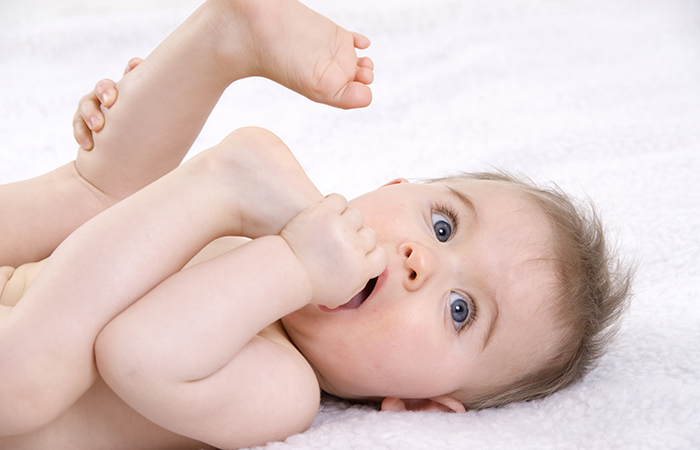St. John's Hospital Springfield Illinois issued the following announcement on May. 19.
A virus with a simple name that commonly affects young children is making a resurgence in day care centers now that children are returning to day cares fulltime as parents return to work after working remotely during the pandemic.
Hand, foot and mouth disease is caused by a virus that is common in infants and children, but anyone can get it. The illness is usually not serious, but it is very contagious and can spread quickly at schools and day care centers.
Following guidance from the Centers for Disease Control and Prevention (CDC) and the American Academy of Dermatology (AAD), HSHS St. John’s Hospital offer the following answers to some of the most frequently-asked-questions about hand, foot and mouth disease.
How does hand, foot and mouth disease spread?
Hand, foot and mouth disease is caused by viruses that belong to the Enterovirus family. A person infected is usually the most contagious during the first week. People can shed the virus through their respiratory tract for one to three weeks and for longer through the fecal route. Infection and shedding can happen without signs of illness.
You can get hand, foot and mouth disease by:
- Contact with respiratory droplets after a sick person coughs or sneezes.
- Making close contact with an infected person, like kissing, hugging, or sharing cups or eating utensils.
- Touching an infected person’s feces, such as changing diapers, then touching your eyes, nose or mouth.
- Touching objects and surfaces that have the virus on them, like doorknobs or toys, then touching your eyes, nose or mouth.
What are signs my child might have hand, foot and mouth disease?
The symptoms usually include a fever or flu-like symptoms, mouth sores and skin rash commonly found on the hands, mouth and/or feet. Most children have mild symptoms for seven to 10 days, although children younger than 2 years of age may be sick longer as it can take more time for their bodies to get rid of the virus.
Children often get a fever and other flu-like symptoms two to six days after exposure to the virus. You may see signs that they are eating or drinking less, act as having a sore throat and are generally feeling unwell. One or two days after the fever starts, your child may get painful mouth sores. These sores usually start as small red spots, often in the back of their mouth, that blister and can become painful.
Hardwick shared, “Young children have trouble communicating clearly when they are uncomfortable. Look for signs that swallowing may be painful for your child such as not eating or drinking, drooling more than usual and only wanting to drink cold fluids.”
Skin rash can happen with or without mouth blisters and may show up on the palms of the hands, soles of the feet, knees, elbows, buttocks or genital area. The rash may look like red spots or cloudy blisters.
Do I need to take my child to the doctor if I suspect it is hand, foot and mouth disease?
Typically, no. Most people get better on their own in seven to 10 days. You can take steps to relieve symptoms and prevent dehydration while you or your child are sick.
Hardwick suggested that parents may give their children over-the-counter medications like acetaminophen or ibuprofen (not aspirin) to relieve fever and pain caused by mouth sores. “Mouth sores can make it painful to swallow, but make sure your child is drinking liquids and urinating every four hours or so. It’s important to keep them hydrated.”
You should see your health care provider if:
- Your child is not drinking enough to stay hydrated.
- Symptoms do not improve after 10 days.
- Your child has a weakened immune system.
- Symptoms are severe.
- Your child is very young, especially younger than 6 months.
Prevention of the spread of this virus is the same as other viruses:
- Wash your hands frequently and help your children wash frequently.
- Clean and disinfect frequently touched surfaces and shared items, including toys and doorknobs.
- Avoid touching your eyes, nose and mouth.
- Avoid hugging or kissing those with the virus.
- Stay home.
Older children and adults can get hand, foot and mouth disease but it is less common.
Can children get hand, foot and mouth disease more than once?
Yes. Hand, foot and mouth disease is caused by several kinds of viruses, just like there are different flu viruses, so those who have had hand, foot and mouth disease can get it again.
Is this the same disease that is found in animals?
Hand, foot and mouth disease is often confused with foot-and-mouth disease (also called hoof-and-mouth disease), which affects cattle, pigs, sheep and goats. Humans do not get the animal disease, and animals do not get the human disease.
For more information about hand, foot and mouth disease, visit cdc.gov/hand-foot-mouth.
Original source can be found here

Source: St. John's Hospital Springfield Illinois






 Alerts Sign-up
Alerts Sign-up